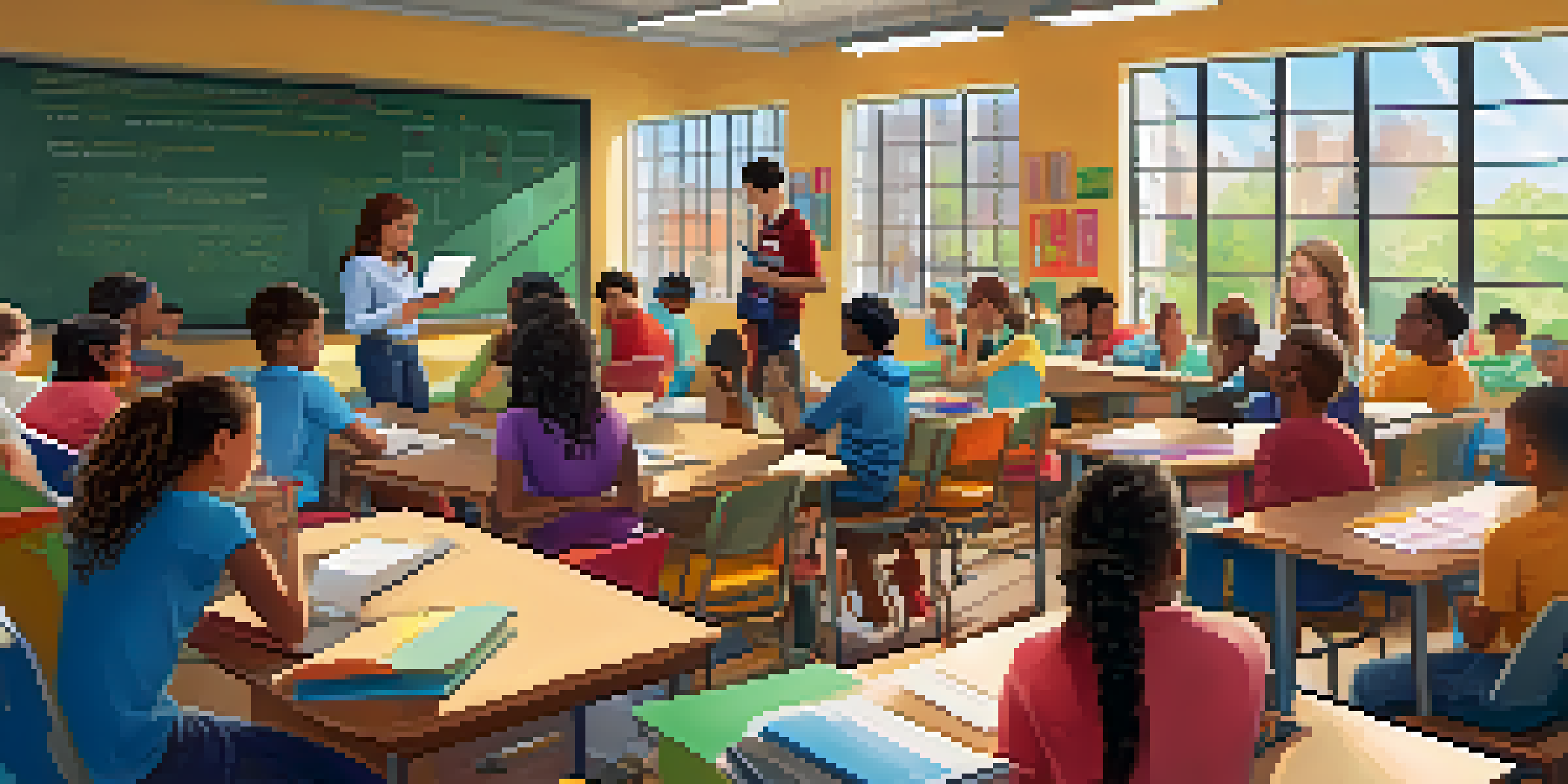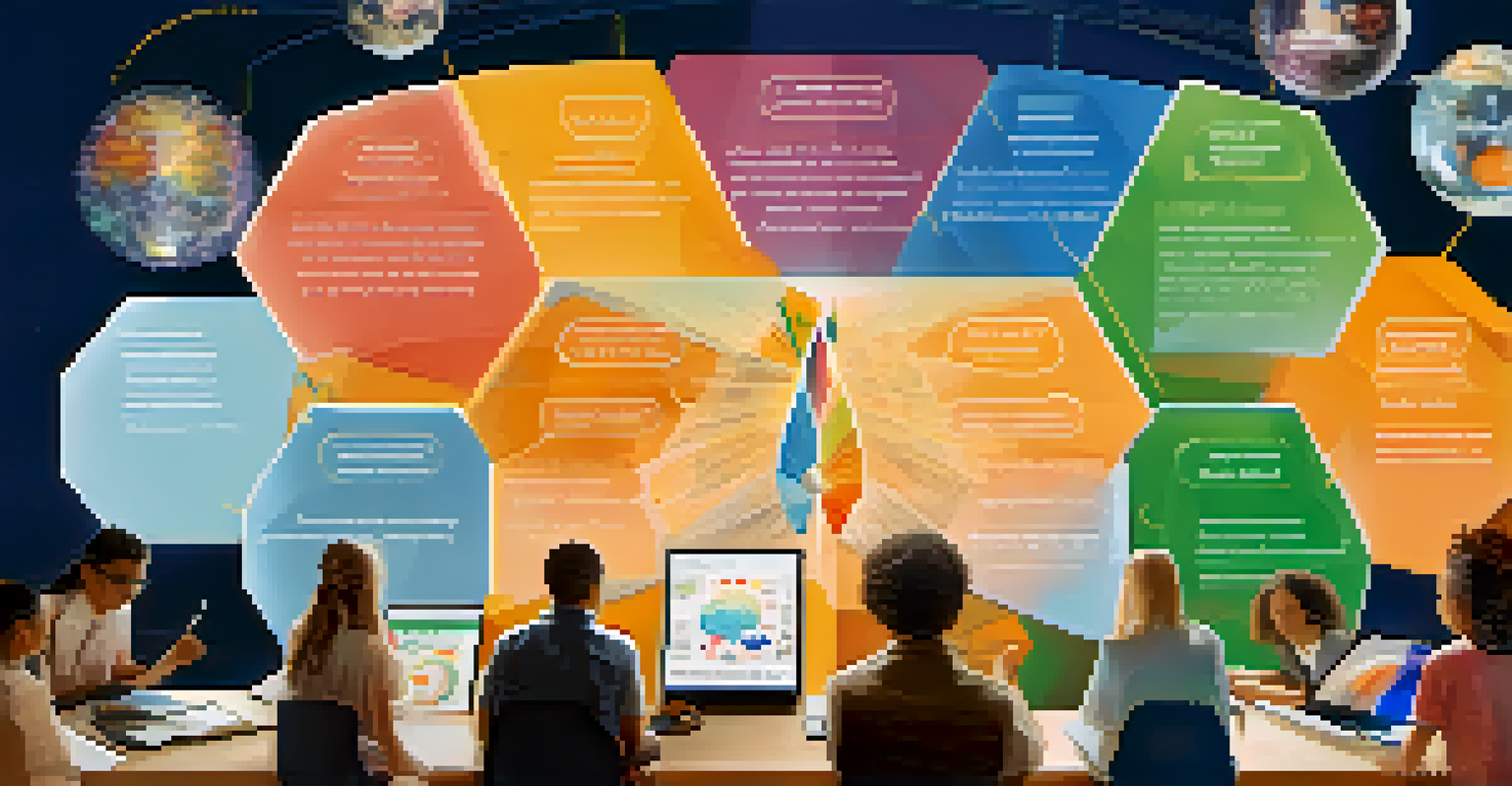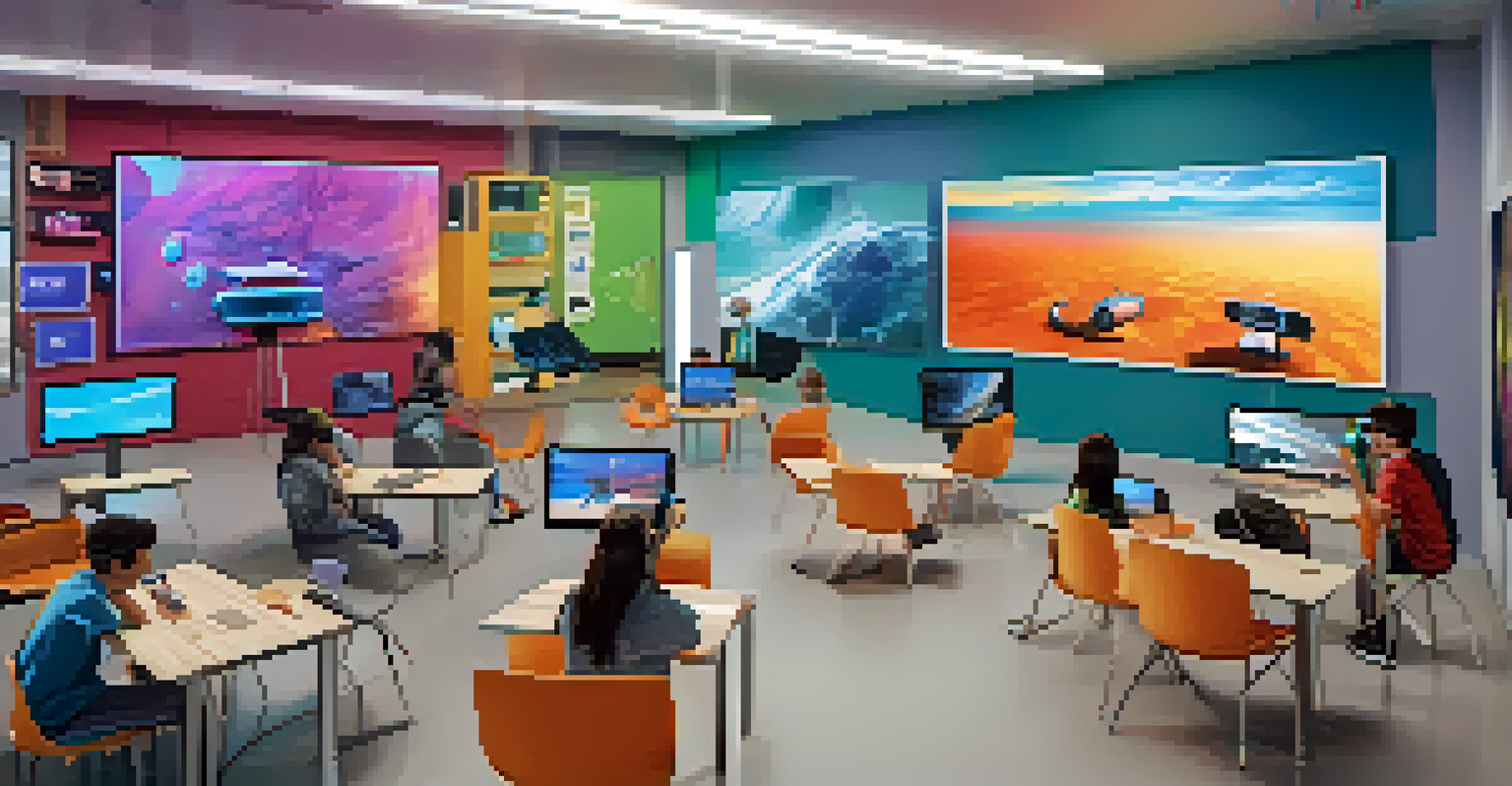Adapting Learning Styles in Blended Learning Frameworks

Understanding Learning Styles in Education
Learning styles refer to the preferred ways individuals absorb, process, and retain information. For example, some learners thrive on hands-on experiences, while others prefer auditory or visual information. Recognizing these differences is crucial in a blended learning environment, where online and in-person methods coexist.
The greatest gift of education is the ability to think for yourself.
By understanding various learning styles, educators can create more inclusive and effective learning experiences. For instance, visual learners might benefit from infographics and videos, whereas kinesthetic learners may excel in interactive tasks. Tailoring materials to these preferences can enhance engagement and comprehension.
Ultimately, acknowledging learning styles helps educators provide a balanced approach, catering to diverse needs. This awareness fosters a supportive atmosphere where all students can thrive, making it an essential aspect of designing effective blended learning frameworks.
Blended Learning: What It Is and Why It Matters
Blended learning combines traditional face-to-face instruction with online learning, offering a flexible approach to education. This method allows students to learn at their own pace while still benefiting from direct instructor support. The blend of online and in-person elements can cater to various learning styles effectively.

For instance, a student who struggles in a lecture setting may find online resources more approachable, allowing them to revisit difficult concepts. Meanwhile, group discussions in the classroom can enhance their interpersonal skills. This flexibility is a key advantage of blended learning, making education more accessible.
Understanding Learning Styles
Recognizing diverse learning styles is essential for creating inclusive and effective educational experiences.
Ultimately, the blended learning framework fosters a more personalized educational experience. By integrating technology, it meets students where they are, accommodating different learning styles and enhancing overall engagement.
Identifying Different Learning Styles
There are several commonly recognized learning styles, including visual, auditory, reading/writing, and kinesthetic. Visual learners prefer images and diagrams, while auditory learners grasp concepts better through listening. Understanding these distinct styles helps educators tailor content more effectively.
Technology is best when it brings people together.
One way to identify learning styles is through assessments or surveys, allowing students to express their preferences. For example, a simple questionnaire can reveal whether a student responds better to visual aids or hands-on activities. This insight empowers teachers to adapt their strategies accordingly.
Moreover, recognizing learning styles fosters a culture of self-awareness among students. When learners understand their preferred methods, they can take charge of their education and advocate for resources that suit their needs, ultimately leading to improved outcomes.
Incorporating Learning Styles into Blended Learning
Incorporating learning styles into a blended learning framework involves designing varied instructional materials. This can include videos, podcasts, readings, and interactive simulations, catering to the spectrum of learning preferences. By providing multiple formats, educators ensure that all students can engage with the content effectively.
For example, a history lesson can be delivered through a documentary for visual learners, a podcast for auditory learners, and a hands-on project for kinesthetic learners. This variety not only keeps students engaged but also reinforces concepts through different modalities.
Blended Learning Benefits
Blended learning combines online and in-person methods, allowing for personalized educational experiences that cater to various learning preferences.
Additionally, instructors can encourage students to explore materials that resonate with their learning styles. Offering choices empowers learners and creates an environment where they feel their needs are respected, ultimately enhancing motivation and performance.
Challenges of Adapting Learning Styles
While adapting to different learning styles offers many benefits, it also presents challenges. One significant hurdle is the potential for educators to become overwhelmed by the variety of materials required. Balancing diverse resources while ensuring content quality can be a daunting task.
Moreover, not all students fit neatly into one learning style; many exhibit a blend of preferences. This complexity can make it difficult to tailor instruction effectively. Educators must remain flexible, adjusting their methods as they observe student responses and progress.
Despite these challenges, the effort to accommodate various learning styles is worth it. The positive impact on student engagement and understanding can outweigh the difficulties, leading to a more enriching educational experience for all.
The Role of Technology in Supporting Learning Styles
Technology plays a vital role in supporting diverse learning styles within blended learning frameworks. Digital tools such as learning management systems (LMS) can provide tailored resources that align with individual preferences. For instance, an LMS can host videos, quizzes, and discussion forums, catering to various learning modalities.
Additionally, adaptive learning technologies can analyze student performance and adjust content accordingly. This means that a student struggling with a concept might receive additional resources or alternative explanations suited to their learning style. Such personalized learning experiences enhance understanding and retention.
Technology Enhances Learning
Technology, including adaptive learning tools, supports diverse learning styles and prepares students for a tech-driven future.
Incorporating technology not only supports learning styles but also prepares students for a tech-savvy world. By integrating digital resources, educators equip learners with the skills needed for success in modern workplaces, where adaptability and tech proficiency are essential.
Future Trends in Blended Learning and Learning Styles
As education continues to evolve, the integration of learning styles into blended learning frameworks is likely to gain momentum. Emerging technologies such as artificial intelligence (AI) and virtual reality (VR) hold the potential to further personalize learning experiences. These advancements can create immersive environments that cater to various learning preferences.
For example, AI-driven platforms can analyze student data to recommend resources that match individual learning styles, making education even more tailored. Meanwhile, VR can provide kinesthetic learners with engaging, hands-on experiences without leaving the classroom.

Looking ahead, the focus on adapting learning styles will drive innovation in blended learning strategies. As educators embrace these trends, they will create more dynamic, inclusive, and effective learning environments that meet the needs of all students.